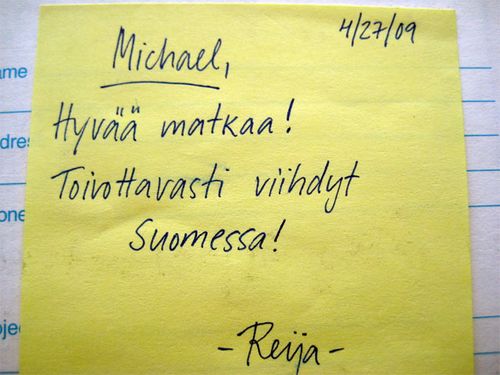Finnish is unlike any other language you are likely to know. Nearly all of the languages in Europe belong to the Indo-European language family and so are all cousins to each other. They share many root words in common, and have similar structures. English, German, Norwegian, Swedish, Danish, Latin, French, Spanish, Italian, Romanian, Russian, Polish, Bulgarian, Greek, Gaelic, Hindu, Urdu, and Sanskrit are all examples of Indo-European languages.
 At the University of Oulu
At the University of Oulu
Finnish, Hungarian and Estonian belong to a totally different language family, the Finno-Ugric.
Finnish has 15 cases for nouns (I don't even know what that means) and over 160 conjugations for verbs!
With the exception of a few words borrowed from Swedish, this means that Finnish is not just mostly unintelligible – it’s completely unintelligible. You can’t even tell when you’re looking at a proper noun like a person’s name. If you do see a person’s name, there’s no knowing if it’s male or female unless you’ve already met somebody with that name.
 Given to me on the plane from Germany
Given to me on the plane from Germany
When I traveled in Norway, I didn’t speak Norwegian. But I could figure some things out because nearly every one-syllable word in Norwegian looks just like its English cognate:
English Norwegian Red Rad Bread Brod Fish Fisk House Haus
You get the idea – plus, there are people living there with names like Peter and Hanna.
In Finland, I can’t even say ‘It’s all Greek to me!” Greek is easier.
 I hope it says "have a great trip!"
I hope it says "have a great trip!"
Now I know how it feels to be illiterate in the modern world.
 They have that look, and there are hazardous chemicals stored inside.
They have that look, and there are hazardous chemicals stored inside.
